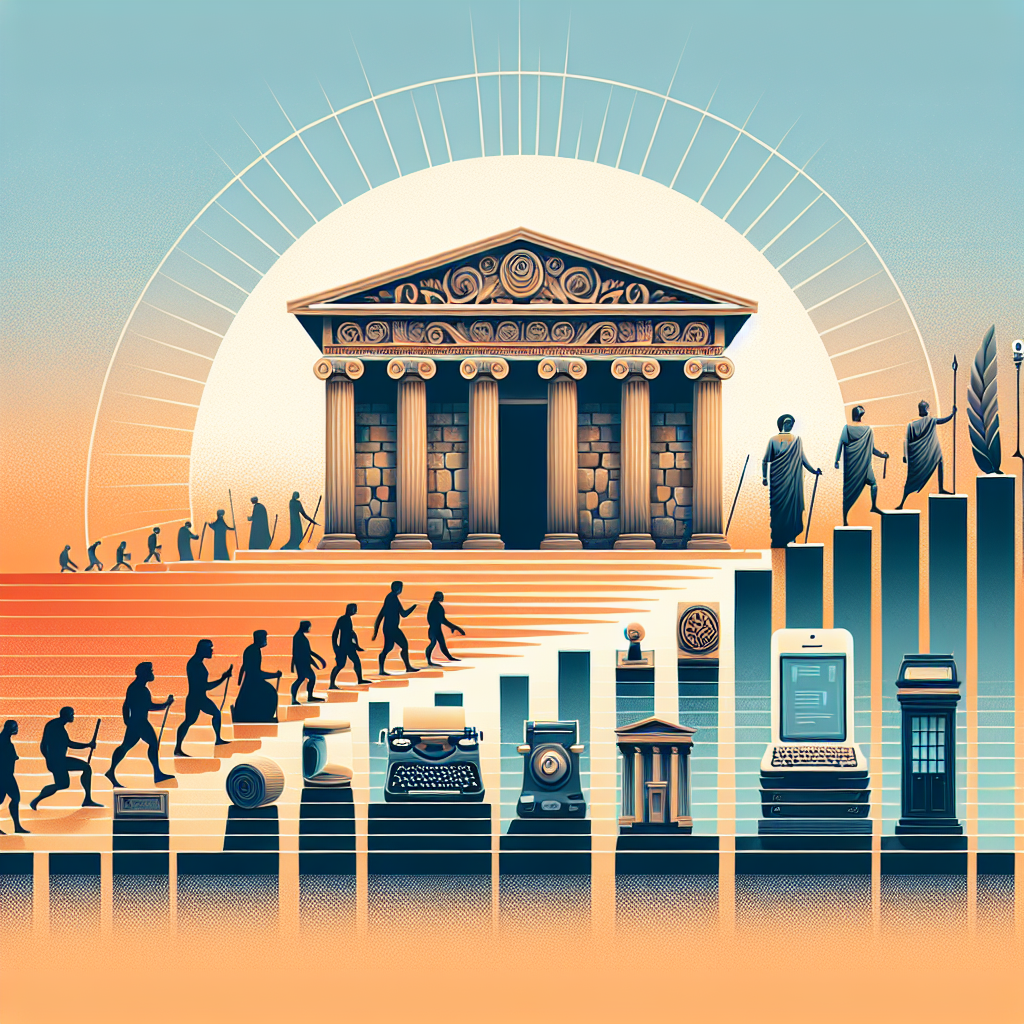The Evolution of Public Administration Systems
Public administration is a crucial aspect of governance that ensures the effective implementation of policies and the smooth functioning of governmental operations. Over the years, public administration systems have evolved significantly, adapting to changes in societal needs, technological advancements, and political landscapes. In this blog post, we will explore the journey of public administration from its early beginnings to its modern-day sophistication.
The Beginnings of Public Administration
The concept of public administration has ancient roots, with early examples observed in civilizations such as Mesopotamia, Egypt, and China. These early systems were primarily concerned with maintaining order and collecting taxes. Administrative roles were often tied to royal duties, and the focus was on the centralization of power.

In ancient China, for instance, the implementation of the civil service examination system during the Han Dynasty marked a significant development. This system aimed to create a merit-based bureaucracy, which influenced future administrative practices worldwide.
Public Administration in the Middle Ages
During the Middle Ages, public administration saw a shift towards more structured bureaucracies. In Europe, the feudal system dominated, where local lords had significant administrative responsibilities. However, as nation-states began to form, there was a move towards more centralized governance systems.
The establishment of the English Common Law system and the Magna Carta were pivotal in shaping public administration in Europe, emphasizing the need for laws and regulations to govern administrative actions.
The Rise of Modern Public Administration
The Industrial Revolution and the subsequent rise of modern nation-states in the 18th and 19th centuries brought about significant changes in public administration. The complexity of industrial societies necessitated more efficient and specialized administrative systems.
Max Weber, a German sociologist, introduced the concept of bureaucracy as an ideal organizational form characterized by hierarchy, specialization, and a clear set of rules. Weber’s model became foundational for modern public administration, emphasizing efficiency and rationality.
Public Administration in the 20th Century
The 20th century witnessed rapid changes in public administration, driven by technological advancements and global events. The Great Depression and World Wars prompted governments to expand their roles, leading to the establishment of welfare states and increased public sector involvement in economic activities.
During this period, the New Public Management (NPM) movement emerged, advocating for the adoption of private sector management practices in the public sector. NPM emphasized decentralization, performance measurement, and customer orientation, aiming to make public services more efficient and responsive.
The Digital Age and Public Administration
In the 21st century, the digital revolution has transformed public administration once again. The rise of information and communication technologies (ICT) has led to the development of e-government, which aims to make government services more accessible and efficient through digital means.
Governments worldwide are leveraging data analytics, artificial intelligence, and blockchain technology to enhance transparency, streamline processes, and improve decision-making. This shift towards digital governance presents new challenges and opportunities for public administrators as they navigate issues of cybersecurity, privacy, and digital equity.
The Future of Public Administration
Looking ahead, public administration will continue to evolve in response to global challenges such as climate change, migration, and pandemics. There is a growing emphasis on collaborative governance, where governments work alongside non-governmental organizations, private sector actors, and citizens to address complex issues.
Innovations in technology will further shape administrative practices, with the potential to revolutionize service delivery and citizen engagement. As public administration systems evolve, the focus will remain on enhancing accountability, inclusivity, and resilience in governance.
Conclusion
The evolution of public administration systems reflects the dynamic nature of governance and the need to adapt to changing circumstances. From ancient bureaucracies to digital governments, public administration has undergone significant transformations, each stage building on the lessons of the past. As we move forward, embracing innovation and collaboration will be key to addressing the challenges of the future and ensuring effective governance for all.
FAQs
What is public administration?
Public administration involves the implementation of government policies and the management of public programs and services. It encompasses the activities of government agencies and officials responsible for executing laws and delivering services to the public.
How has technology impacted public administration?
Technology has significantly impacted public administration by improving efficiency, transparency, and accessibility. E-government services allow citizens to access information and services online, while technologies like AI and data analytics enhance decision-making and service delivery.
What are some challenges facing public administration today?
Public administration faces challenges such as managing digital transformation, ensuring data security and privacy, addressing climate change, and fostering inclusivity and equity in governance. Administrators must also navigate complex policy issues and balance competing interests.





Leave a Reply
You must be logged in to post a comment.